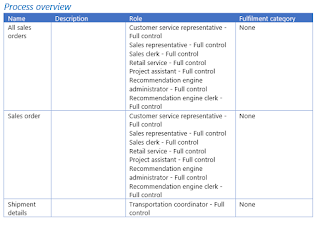When you work with MSDyn365FO as a functional consultant, you will definitely have the need to view the Microsoft Dynamics 365 for Finance and Operations tables.
The best way to do so (instead of using Visual studio, or typing /?mi=SysTableBrowser) is to use Chrome extension.
That extension is called Table Browser Caller for D365FO. To install it follow the steps below:
Open https://chrome.google.com/webstore/category/extensions in the Chrome browser.
Search for Table Browser Caller for D365FO.
Click Add to Chrome button.
Confirm the installation by clicking Add extension button
Wait until you receive the confirmation that extension has been added
The new icon will be added to the browser.
Click on the added icon in the browser.
Switch to the Config tab.
In the Dynamics 365 for Finance and Operations base URL, you will notice the default URL address.
Click on the Add icon.
Insert the URL to Dynamics 365 for Finance and Operations environment.
Click the Save icon.
Switch to the Table Browser Caller tab.
In the Company Id, type in the legal entity code.
In the Search for table name field, type in the MSDyn365FO table and press Enter.
A new tab in the browser will be opened and data from the selected table will be presented.
The best way to do so (instead of using Visual studio, or typing /?mi=SysTableBrowser) is to use Chrome extension.
That extension is called Table Browser Caller for D365FO. To install it follow the steps below:
Open https://chrome.google.com/webstore/category/extensions in the Chrome browser.
Search for Table Browser Caller for D365FO.
Click Add to Chrome button.
Confirm the installation by clicking Add extension button
Wait until you receive the confirmation that extension has been added
The new icon will be added to the browser.
Click on the added icon in the browser.
Switch to the Config tab.
In the Dynamics 365 for Finance and Operations base URL, you will notice the default URL address.
Click on the Add icon.
Insert the URL to Dynamics 365 for Finance and Operations environment.
Click the Save icon.
Switch to the Table Browser Caller tab.
In the Company Id, type in the legal entity code.
In the Search for table name field, type in the MSDyn365FO table and press Enter.
A new tab in the browser will be opened and data from the selected table will be presented.







